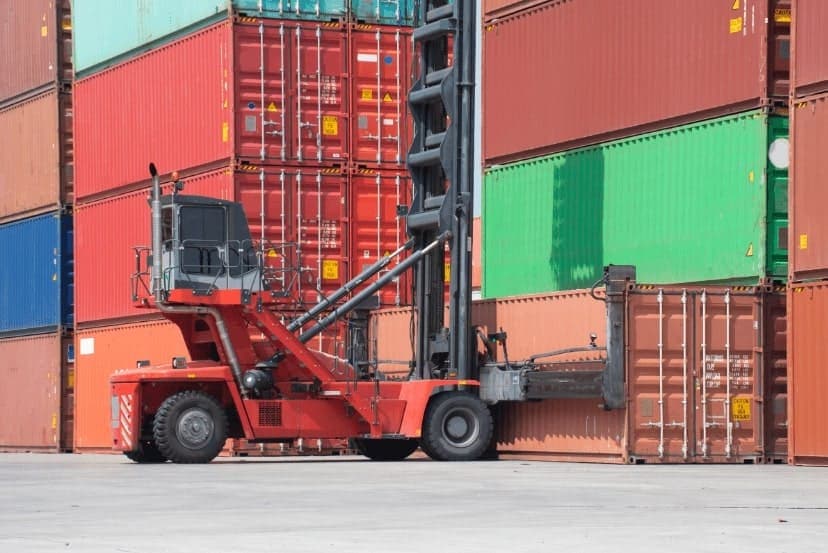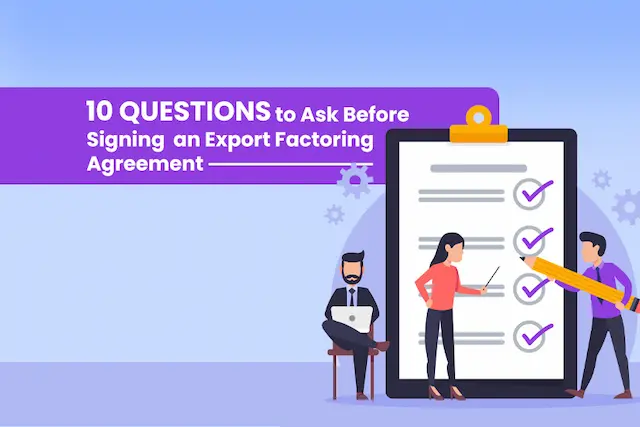High Cube Containers in shipping represent a crucial innovation in the world of cargo transport. These specialized containers, available in various sizes such as 20, 40, and 45 feet, are designed with an extra height dimension, providing a distinct advantage for shipping diverse goods. More than just standardized metal boxes, High Cube Containers offer a versatile solution for industries globally. They go beyond the conventional, enabling the transportation of oversized equipment, delicate cargo, and bulk items.
Constructed with durability in mind, these containers are crafted from anti-corrosive materials, ensuring the safety of goods during transit. Whether you’re in the manufacturing, construction, or logistics sector, understanding the meaning, types, and uses of High Cube Containers opens up new possibilities for efficient and secure cargo shipping.
Join us as we delve into the world of High Cube Containers, exploring their significance and the myriad ways they contribute to modern shipping practices.
What Are High Cube Containers in Shipping?
High cube containers are specialized shipping containers that differ from standard containers in terms of height. While standard containers have a height of 8 feet and 6 inches (2.59 meters), high cube containers provide additional vertical space, standing at 9 feet and 6 inches (2.89 meters). This extra height makes high cube containers ideal for transporting and storing goods that require more vertical clearance, such as oversized machinery, tall equipment, or goods stacked in a way that utilizes the extra space efficiently.
The increased cubic capacity of high cube containers allows for greater flexibility in loading and accommodates bulkier cargo. This makes them popular in various industries, including manufacturing, automotive, and construction. High cube containers play a crucial role in international shipping, providing an effective solution for transporting diverse and larger items while maintaining the standardized dimensions of traditional shipping containers.
Features of High-Cube Containers For Shipping
Here are some of the features of High-Cube Containers for Shipping:
Extra Height: High-cube containers are taller, providing additional vertical space for accommodating larger cargo.
Versatility: Suited for diverse cargo types, from machinery to household items, due to their adaptable design.
Durability: Constructed with robust, anti-corrosive materials, ensuring long-lasting protection for goods.
Secure Locking: Equipped with secure lock boxes to prevent unauthorized access during transit.
Waterproof: Built to withstand adverse weather conditions, keeping cargo dry and safe.
Ventilation Options: Some containers allow for ventilation modifications to suit specific cargo needs.
Customizable: Can be modified for special cargo requirements, such as refrigeration or additional layers.
Standardized Sizes: Available in standard lengths of 20, 40, and 45 feet, ensuring compatibility with shipping infrastructure.
Ease of Loading: Designed for easy loading and unloading, optimizing efficiency in logistics operations.
Floor Quality: Typically lined with marine-grade plywood to prevent moisture and fungal infestations.
International Standards: Adheres to ISO specifications, ensuring compliance with global shipping regulations.
Transport Mode Compatibility: Suitable for shipping by sea, rail, or truck, providing flexibility in transportation options.
Cost-Effective: Despite the added height, high-cube containers often offer cost-efficient shipping solutions.
Refurbishment Potential: High shelf life of 10-12 years, with the potential for refurbishment for extended use.
High Cargo Capacity: Can handle significant weights, with the 40 ft variant capable of carrying up to 26,300 kg.
High Cube Containers: Efficient and Secure Shipping Solutions
High cube containers are like big boxes used for shipping. They’re taller than regular ones, providing more space. Here’s how people use them:
Storage: Sometimes, when goods arrive, they can’t be delivered right away. High cube containers act like temporary storage rooms to keep things safe.
Sturdy and Waterproof: These containers are tough and won’t let water in. They’re made of strong, anti-corrosive steel, protecting goods from bad weather, theft, and accidents during loading and unloading.
Cost-Effective and Easy to Move: High cube containers are good for moving a lot of stuff. They can handle heavy weights and stay balanced, making it easier to load and unload them from ships or trains.
Special Cargo: Because they’re taller, high cube containers can be changed inside. They can have air-conditioning, ventilation, or extra layers. This makes them perfect for carrying delicate things like electronics, furniture, or supplies for charity.
In simple terms, high cube containers are like reliable, big storage boxes that can handle different types of cargo and keep everything safe during transportation.
Benefits of High Cube Containers In Shipping
High cube containers offer several advantages in the shipping industry:
Increased Capacity: The most apparent benefit is the additional height, providing more cubic feet of storage space. This extra volume is valuable for accommodating larger or bulkier goods, optimizing the use of container space.
Versatility: High cube containers are versatile and suitable for a wide range of cargo, including oversized machinery, vehicles, and goods that require extra vertical clearance. This flexibility makes them essential for various industries.
Cost Efficiency: Despite the added height, high cube containers generally do not significantly increase shipping costs compared to standard containers. The increased capacity allows for more goods to be transported in a single container, potentially reducing overall shipping expenses.
Ease of Loading and Unloading: The additional height simplifies the loading and unloading process, especially when dealing with tall or awkwardly shaped items. This can lead to quicker turnaround times and improved efficiency in logistics operations.
Standardized Dimensions: High cube containers maintain standardized dimensions in terms of length and width, ensuring compatibility with existing shipping infrastructure, including container ships, trucks, and railways.
Stacking Efficiency:The extra height facilitates efficient stacking of cargo within the container, minimizing wasted space. This is particularly advantageous when transporting goods that can be stacked vertically without compromising their integrity.
Adaptability to Specialized Cargo: High cube containers are well-suited for transporting specialized cargo, such as certain types of machinery or equipment that may not fit within the height constraints of standard containers.
Compliance with Regulations: High cube containers adhere to international shipping standards, ensuring compliance with regulations and simplifying the customs clearance process.
High cube containers contribute to enhanced efficiency, cost-effectiveness, and adaptability in shipping various types of cargo, making them a valuable asset in the global logistics network.
Guide to High Cube Container Sizes for Efficient Shipping
High cube containers come in three sizes: 20 feet, 40 feet, and 45 feet. People choose the size based on weight and how much stuff they need to transport.
20 ft High Cube Container
This one is about 9 feet and 6 inches tall outside. It’s a common steel box that holds and protects things weighing up to 8799 pounds. It might have doors on both ends. These containers are strong, made of anti-corrosive steel, and have good floors to keep things dry. They follow rules to have secure locks and vents. You can put them on ships and trains.
40 ft High Cube Container
Like the 20-foot one, this is also about 9 feet and 6 inches tall outside. It’s good for bigger, lighter loads. You can use it for temporary or permanent storage. It’s easy to load and unload, needing less than 100 feet of space. The doors are about 8 feet and 5 inches tall, and it can hold up to 26,300 kg. You can customize it, add things like a fridge or different pallets. It lasts a long time, about 10-12 years.
45 ft High Cube Container
This one is also 9 feet and 6 inches tall. It’s for really big loads, with a maximum weight of 27,860 kg and a lot of space inside. People use it for things like building materials, machinery, and furniture.
Key Considerations for Choosing High Cube Containers in Shipping
When choosing high cube containers for shipping, consider the following factors:
Cargo Size and Volume: Assess the size and volume of your cargo to ensure it fits comfortably within the high cube container. The extra height is beneficial for accommodating larger or bulkier items.
Weight of Cargo: Check the weight of your cargo to ensure it complies with the container’s weight limits. Different container sizes have varying weight capacities.
Transportation Mode: Consider the mode of transportation, whether it’s by ship, train, or truck. Ensure that the chosen high cube container size is compatible with the transportation method and infrastructure.
Container Size Options:High cube containers are available in different lengths, such as 20 feet, 40 feet, and 45 feet. Choose a size that best suits your shipping needs.
Loading and Unloading Requirements: Assess the loading and unloading facilities available at both the departure and destination points. Ensure that the chosen high cube container size can be efficiently loaded and unloaded at these locations.
Customization Needs: Evaluate if your cargo requires any special modifications or features, such as ventilation, refrigeration, or additional security measures. Some high cube containers can be customized to meet specific cargo requirements.
Budget Considerations: Compare the costs associated with different high cube container sizes. While larger containers offer more space, they may also incur higher transportation costs. Find a balance that meets your needs without exceeding your budget.
Container Condition: Inspect the condition of the high cube container, checking for any damages or structural issues. Ensure that it meets international shipping standards and regulations.
By considering these factors, you can make an informed decision when choosing high cube containers, ensuring a smooth and efficient shipping process for your cargo.
Final Words
High cube containers are like big, helpful boxes for shipping different things. They come in three sizes: 20 feet, 40 feet, and 45 feet, and they’re taller than regular containers. This extra height is great because it allows you to fit larger or bulkier items.
We learned that these containers are strong, made of tough materials that protect your stuff from bad weather and accidents. They are also versatile, meaning they can be used for many types of cargo, from big machines to furniture.
Choosing the right container involves thinking about the size of your cargo, its weight, and how you’re going to move it—whether by ship, train, or truck. There are different sizes to pick from, and you need to consider your budget too.
So, high cube containers are not just boxes; they are like superheroes in the shipping world, making sure your things get where they need to go, safely and efficiently.”





